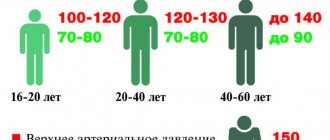How to get rid of vegetative vascular dystonia at home?
Vegetative-vascular dystonia (VSD), or neurocirculatory dystonia (NCD) is a complex polyetiological disorder that develops with dysfunction of the autonomic nervous system, which regulates the activity of internal organs and blood vessels. This disease can also be found under the names “cardioneurosis”, “vegetoneurosis”, which show the relationship between the symptoms of VSD and the state of the autonomic nervous system.
Although most doctors do not recognize the existence of such a diagnosis and do not consider it to be VSD disease, in the ICH you can find the heading F45.3, which combines all of the above diagnoses. However, for patients, vegetative-vascular dystonia becomes a real test, since the disease has a lot of variants of the course and painful symptoms, and significantly worsens the quality of life. But its duration is not affected, it has a favorable prognosis and a benign course.
What it is?
In simple words, VSD is a syndrome that appears due to nerves. In general, most problems appear precisely because of stress and anxiety, but vegetative-vascular dystonia is always the first in line.
Attacks of VSD are caused by disturbances in the functioning of the cardiovascular system, which, in turn, appear against the background of functional disorders of the nervous or endocrine system. That is, the root cause is almost always nervous shock. Which, as we know, rarely go away without leaving a trace and very often can lead specifically to neurocirculatory dystonia, which is the other name for the disease.
Causes
Every day patients come to see me and I identify VSD as the main cause of somatic (physical) disorders. Moreover, different people’s symptoms may vary greatly: from movement disorders to the sensation of a lump in the throat. Digging into the causes of the ailments of each individual person, I concluded that there are common factors that provoke vegetative-vascular dystonia.
- Family predisposition. If one of the parents has a similar problem, the likelihood of VSD in children increases significantly. The disease often debuts during puberty. Currently, there is no reliable information about identifying the gene that would be responsible for the presence or absence of the syndrome.
- Diseases of the central or peripheral nervous systems, in which the regulatory centers of the autonomic department are located (increased intracranial pressure due to injury, tumor, consequences of stroke).
- The social environment in which a person finds himself, his relationships with others at home and at work (problems in this sector are often a risk factor).
- Some chronic diseases (endocrine, cardiovascular systems, gastrointestinal tract).
- Change of climatic conditions.
- History of neuroinfections.
- Features of psychological development.
- Frequent stressful situations, excessive psychological stress.
Causes of VSD
Among the main causes of vegetative-vascular dystonia syndrome, doctors name factors of hereditary predisposition. Against the background of unfavorable external factors, these reasons can have a significant impact on the state of the human autonomic nervous system. The leading component of the manifestations and intensification of the syndrome is the brain, namely the hypothalamus, which is responsible for controlling the human endocrine system. Psychoneurological disorders lead to excessive activity of some processes and inhibition of others, which has a complex effect on various systems of the body, including the cardiovascular system.
- Most often, vegetative-vascular dystonia in children is detected as a consequence of heredity. Increased nervousness and stress already in the first months of pregnancy can have a significant impact not only on the formation of the child’s personality, but also on the higher nervous activity of the brain. Facts show that the emotional instability of a child’s body provokes the development of VSD even in childhood.
- The teenage years are transitional not only in the process of transformation of a child into an adult, but also in a neurophysiological one. Conflict situations, emotional stress, chronic diseases, endocrine disorders, lack of movement and other factors are largely provocateurs for the development of vegetative-vascular dystonia in adolescents. Increased mental stress, having a hereditary component, leads to a certain imbalance in the body, which leads to the appearance and development of vegetative-vascular dystonia.
- In adulthood, hormonal changes in the body play a special role in triggering the mechanisms of VSD. This is why the female half of the world’s population suffers from VSD much more often than the male half. The prenatal period, pregnancy, menopause, all of this, being turning points in a woman’s life, can become the starting point for mobilizing the manifestation of symptoms of vegetative-vascular dystonia. Vegetative-vascular dystonia is especially unfavorable during pregnancy, when even minor deviations in a woman’s health necessarily affect the condition of the fetus.
The same is true for the presence of excess weight, which can provoke manifestations of dystonia. An increase in body weight leads to the development of hypertension, which in turn is an additional burden on the cardiovascular system. The development of vegetative-vascular dystonia in this case affects people of completely different ages.
Causes of VSD
External factors causing the development of VSD are acute and chronic psycho-emotional stress; iatrogeny; infections (tonsillogenic, carious, bacterial, viral); physical and chemical effects (brain injuries, chronic intoxication, hyperinsolation, vibration, ultra-high frequency currents, ionizing radiation), alcohol abuse; overwork.
The interaction of internal and external factors leads to disruption at any level of the complex neurohumoral and metabolic regulation of the cardiovascular system, and the leading link in the pathogenesis of VSD is damage to the hypothalamic structures of the brain, which play a coordinating and integral role in the body. Neurologists, neuropathologists and reflexotherapists believe that the leading role in the development of VSD is given to hereditary-constitutional factors, which manifest themselves in the form of functional insufficiency of the regulatory structures of the brain or their excessive reactivity; features of the course of a number of metabolic processes and altered sensitivity of the peripheral receptor apparatus. Dysregulation manifests itself in the form of dysfunction of the sympathoadrenal and cholinergic systems, histamine-serotonin and kallikrein-kinin systems, disorders of water-salt and acid-base states, oxygen supply to physical activity, and decreased oxygen in tissues. All this leads to the activation of tissue hormones (serotonin, histamine, catecholamines) with subsequent metabolic disorders, microcirculation with the development of degenerative processes in the myocardium.
Types of disease
As a result of vegetative vascular dystonia, the brain and heart, kidneys, and limbs suffer. Therefore, autonomic dystonia syndrome is like a chameleon: in different people it manifests itself with such different symptoms that it is difficult to suspect their common cause. There are three types of pathology: hypertensive, hypotonic and mixed.
- If, regardless of the “internal need,” the sympathetic nervous system predominates during the day, they speak of a hypertensive type of vegetative-vascular dystonia. The person complains of attacks of palpitations and/or panic, anxiety, gets tired quickly, but has difficulty falling asleep in the evening. Blood pressure is elevated or unstable.
- When the parasympathetic nervous system predominates throughout the day, a person feels weakness, drowsiness, fatigue, and occasionally dizziness and fainting; we are talking about the hypotonic type of VSD. The pressure is reduced.
- When the sympathetic and parasympathetic systems “fight” for leadership, alternately winning and losing, hyper- and hypotonic symptoms replace each other, they speak of a mixed type.
Upon examination, it turns out that the organs and systems are in order, there are no pathologies in them, and such VSD is called primary. If the symptom complex of vegetative-vascular dystonia occurs against the background of another disease, it is considered secondary.
Description of the syndrome and physiology of its occurrence
To make the essence of VSD clear, I will first explain how it arises.
The nervous system is divided into somatic and autonomic. The somatic part provides motor responses to external stimuli using the senses. For example, when we touch a hot pan, neuromuscular transmission receptors send an impulse to the pain centers, and we pull our hand back. The vegetative part regulates the activity of internal organs, glands and blood vessels. Thanks to it, our body works like a clock - everything happens involuntarily and on time. Both structural units closely interact with each other and simultaneously participate in reactions to stimuli. Anatomically and functionally, the autonomic nervous system (ANS) is divided into sympathetic and parasympathetic parts. The sympathetic part increases our activity, increasing metabolism, as a result of which tissue excitability increases. Parasympathetic, on the contrary, helps the body recover by regulating its functioning during sleep. They function synchronously, but when a “trigger mechanism” (most often stress) is turned on, a dominant is formed - the predominance of one or another department, which disrupts a person’s mental adaptation and emotional balance.
Vegetative-vascular dystonia is a complex of symptoms that arise when there is a disconnection in the work of the autonomic nervous system, manifested by a variety of functional disorders of internal organs and systems.
The syndrome has many synonyms - neurocirculatory dystonia, cardioneurosis, neurasthenia, autonomic neurosis, autonomic dysregulation, dysvegetosis.
First signs
Disorders of the autonomic nervous system can cause very diverse manifestations; about 150 of them are known. For VSD, the most characteristic symptoms are those associated with the vascular reaction and the central nervous system:
- headache;
- noise in ears;
- dizziness;
- tendency to faint;
- increased heart rate;
- weakness, drowsiness;
- increased sweating;
- unclear increase in body temperature;
- muscle pain;
- trembling in the body and hands.
Individuals with vegetative-vascular dystonia are characterized by mental characteristics:
- sudden changes in emotions;
- tendency to panic;
- obsessive thoughts;
- increased anxiety;
- suspiciousness in character.
Features of vegetative-vascular dystonia in men
Vegetative-vascular dystonia occurs on average 4 times less often in men than in women. Scientists explain this by the fact that women are more emotional and susceptible to hormonal surges. But in childhood, autonomic dysfunction occurs equally often in both boys and girls. How do the symptoms of VSD transform in adults, and what reactions in men can replace panic attacks?
Boys do not Cry
Boys receive the message that emotions need to be kept under control quite early. The ban on tears and manifestations of weakness and gentleness leads to the fact that the only possible emotional reaction in a boy is aggression. But aggression in its pure form is not approved; it must be shown in moderation.
In VSD, the balance between the sympathetic and parasympathetic divisions of the autonomic nervous system is disrupted mainly due to insufficiency of the parasympathetic division. Being in constant psychological stress increases the tone of the sympathetic nervous system, which introduces an even greater imbalance in autonomic regulation.
As a result, a tendency to VSD and vegetative crises in adolescence is manifested by outbursts of anger, dangerous behavior, negativism, and craving for alcohol. In this case, the symptoms of VSD from the heart can be masked by age-related characteristics. Palpitations, weakness after physical activity, sweating, and pressure surges in adolescents are usually explained solely by hormonal changes. The other extreme is an overprotected child who does not have the opportunity to legally show aggression and suffers from panic attacks in adolescence.
Therefore, we cannot confidently say that men are less prone to vegetative-vascular dystonia, because in fact, the conditions for its development in their lives are no less.
Transformation of VSD symptoms in men
Scientists today explain the predominance of classic symptoms of VSD in women by social reasons. Men may also suffer from panic attacks, headaches due to weather changes, gastrointestinal disorders, and palpitations. But most cases of vegetative-vascular dystonia in men are not diagnosed on time simply because, if there is no obvious danger to life, the man tends to rather hide the fact of unpleasant symptoms. Many people use alcohol as a medicine. So, a panic attack may well result in drinking alcohol in a company, or even alone. For some time, alcohol helps and is actively used as a preventive measure. But regular drinking ultimately increases autonomic failure and leads to organic changes in vital organs. According to research results, more than half of men who were diagnosed with autonomic dysfunction abused alcohol.
Prevention and treatment of vegetative-vascular dystonia in men
Diagnosing autonomic dysfunction in men is not easy. Symptoms of VSD can imitate various diseases, and everything will ultimately be attributed to overwork or stress. Ignorance of the nature of the symptoms gives rise to exaggeration of the danger or complete ignorance; most often, VSD in men is diagnosed by chance. Therefore, it is advisable for all men who experience symptoms characteristic of VSD to take preventive measures.
To prevent VSD, neurologists recommend taking amino acid preparations, which naturally restore the balance between the sympathetic and parasympathetic departments. The drug of choice in this case is Eltacin® . It is created on the basis of the amino acids glycine, cystine and glutamic acid that are natural to the body, improves energy production and recovery processes in the body, prevents heart disease, and helps withstand physical activity.
Treatment of VSD with Eltacin® in men gives good results in the first few days, but for a lasting effect it is recommended to take the drug for a long time.
Symptoms of dystonia in men are not a sign of weakness, and require the same attention as any other disease. Take care of your health!
Clinical syndromes of VSD
Autonomic dysfunction syndrome combines sympathetic, parasympathetic and mixed symptom complexes of a generalized, systemic or local nature, manifesting permanently or in the form of paroxysms (vegetative-vascular crises), with non-infectious low-grade fever, and a tendency to temperature asymmetry.
- Vagotonia is characterized by bradycardia, difficulty breathing, redness of the facial skin, sweating, salivation, decreased blood pressure, and gastrointestinal dyskinesia. Vagoinsular crisis is manifested by a feeling of heat in the head and face, suffocation, heaviness in the head, nausea, weakness, sweating, dizziness, the urge to defecate, increased intestinal motility, miosis is noted, a decrease in pulse to 45-50 beats per minute, a decrease in blood pressure. up to 80/50 mm Hg. Art.
- Sympathicotonia is characterized by tachycardia, pallor of the skin, increased blood pressure, weakened intestinal motility, mydriasis, chills, a feeling of fear and anxiety. During a sympathoadrenal crisis, a headache appears or intensifies, numbness and coldness of the extremities occurs, the face becomes pale, blood pressure rises to 150/90-180/110 mmHg, the pulse quickens to 110-140 beats/min, pain in the area is noted heart, excitement, motor restlessness appear, sometimes body temperature rises to 38-39 °C.
- Syndrome of mental disorders - behavioral and motivational disorders - emotional lability, tearfulness, sleep disturbance, feeling of fear, cardiophobia. Patients with VSD have a higher level of anxiety, they are prone to self-blame, and experience fear in making decisions. Personal values prevail: great concern for health (hypochondria), activity decreases during illness. When diagnosing, it is important to differentiate between somatoform autonomic dysfunction, in which there are no mental disorders, and hypochondriacal disorder, also considered a somatogenic neurosis-like condition, as well as panic disorder and phobias, other nervous and mental diseases.
- Mixed crises are characterized by a combination of symptoms typical of crises, or their alternate manifestation. There may also be: red dermographism, zones of hyperalgesia in the precordial region, “spotted” hyperemia of the upper half of the chest, hyperhidrosis and acrocyanosis of the hands, tremor of the hands, non-infectious low-grade fever, a tendency to vegetative-vascular crises and temperature asymmetries.
- Hyperventilation (respiratory) syndrome is a subjective feeling of lack of air, chest compression, difficulty in breathing, and the need for deep breaths. In a number of patients it occurs in the form of a crisis, the clinical picture of which is close to suffocation. The most common reasons that provoke the development of respiratory syndrome are physical exertion, mental stress, staying in a stuffy room, sudden changes in cold and heat, and poor transport tolerance. Along with the mental factors of shortness of breath, a decrease in the compensatory and adaptive capabilities of the respiratory function to hypoxic loads is of great importance.
- Syndrome of adaptation disorders, asthenic syndrome - fatigue, weakness, intolerance to physical and mental stress, weather dependence. Evidence has been obtained that asthenic syndrome is based on disturbances in transcapillary metabolism, decreased tissue oxygen consumption and impaired hemoglobin dissociation.
- Cardiovascular syndrome - cardialgia in the left half of the chest that occurs during emotional rather than physical stress, is accompanied by hypochondriacal disorders and is not relieved by coronal drugs. Blood pressure fluctuations, pulse lability, tachycardia, functional murmurs. ECG and bicycle ergometry most often reveal sinus and extrasystolic arrhythmias; there are no signs of myocardial ischemia.
- Neurogastric syndrome - neurogastric aerophagia, esophageal spasm, duodenostasis and other disorders of the motor-evacuation and secretory functions of the stomach and intestines. Patients complain of heartburn, flatulence, constipation.
- Syndrome of metabolic tissue and peripheral vascular disorders - tissue edema, myalgia, angiotrophoneurosis, Raynaud's syndrome. Their development is based on changes in vascular tone and vascular permeability, disturbances in transcapillary exchange and microcirculation.
- Cerebrovascular syndrome - headaches, dizziness, noise in the head and ears, tendency to faint. Their development is based on cerebral angiodystonia, the pathogenetic basis of which is dysregulation of cerebral vascular tone of a hypertonic, hypotonic or mixed nature. In some patients with persistent cephalgic syndrome, there is a violation of the tone of not only arterial, but also venous vessels, the so-called functional venous hypertension.
Symptoms and manifestations of VSD
A dysfunction of the autonomic nervous system can affect one or several organs at once. Depending on this, there are several types of vegetative-vascular dystonia (also called syndromes), each of which manifests itself in its own way.
| Syndrome | Symptoms |
| hypertensive syndrome | increased heart rate, short-term increase in blood pressure (up to 140-170/100 mm Hg), which decreases without taking medications |
| hypotensive syndrome | decreased blood pressure to 90/60 mm Hg, headaches, weakness, dizziness, cold hands and feet |
| cardialgic syndrome | symptoms resemble angina pectoris, but are not associated with physical activity: nagging, bursting pain and burning in the heart area behind the sternum |
| tachycardial syndrome | increased heart rate up to 90-120 beats per minute, increased blood pressure, a feeling of vibration in the head, redness of the face |
| asthenic syndrome | weather dependence, physical weakness and fatigue in the morning, worsening in the evening, decreased attention, ability to work, and in a lying position - comfortable well-being |
| visceral syndrome | intestinal dysfunction, pain and bloating, flatulence, indigestion |
| respiratory syndrome | soreness and feeling of a lump in the throat, inability to take a deep breath, pain and tightness in the chest |
| mixed form | combination of two or more VSD syndromes |
If vegetative-vascular dystonia is not treated
Any form of vegetative-vascular dystonia significantly affects the quality and lifestyle of a person, depriving him of the opportunity to work and live normally. In severe cases, VSD can be manifested by loss of consciousness, increased heart rate and other dangerous conditions. In addition, if vegetative-vascular dystonia is not treated and controlled, it can develop into serious diseases of those organs in which the balance between the sympathetic and parasympathetic parts of the nervous system is disturbed:
- heart (hypertension, ischemia, stroke and heart attack)
- stomach and intestines (intestinal atony (hypotonicity), gastritis)
- kidneys and genitourinary system (urinary incontinence, diseases of the reproductive system in men and women)
- psyche and nervous system (convulsions, panic attacks).
All syndromes associated with vegetative-vascular dystonia are characterized by periodic exacerbations - crises or attacks. During an attack of VSD, all manifestations of the syndrome sharply worsen (tachycardia, fainting, shortness of breath), accompanied by a panic attack for no apparent reason. Such attacks can last a short or long time, and then pass without a trace.
Panic attack
This is another syndrome that will be a characteristic symptom of vegetative-vascular dystonia. A person experiences severe fright, a feeling of approaching anxiety, and a wave of fear covers him.
At the same time, the body sends signals about danger, but it does not provide options for solving the problem. Therefore, the patient experiences a strong fear of death, it seems to him that his heart stops, his breathing takes away. It is noteworthy that literally after 10-15 minutes the panic attack against the background of VSD passes, and the person’s condition returns to normal.
Current of VSD
In most cases, without provoking factors, the disease is latent (asymptomatic).
However, under the influence of unfavorable conditions and overloads, crises often occur. Such crises are sometimes sudden in nature and are accompanied by symptoms characteristic of many diseases: pallor, sudden sweating, decreased blood pressure, abdominal pain, nausea and vomiting, and decreased body temperature.
A crisis surge in disease activity is more severe in older people, especially those who suffer from concomitant diseases. In many cases, a crisis is the result of long-accumulated components, and therefore it is not uncommon for a large number of symptoms to manifest simultaneously.
Diagnostics
As already mentioned, VSD is a diagnosis of exclusion. Therefore, to diagnose it, all additional methods are needed that will exclude organic pathology. A general examination of the patient is needed, consultation with a neurologist, cardiologist, gastroenterologist and endocrinologist.
A complete cardiac examination is carried out: laboratory tests, cholesterol, ECG, ultrasound of the heart, exercise tests, Holter ECT and blood pressure. Also prescribed are x-rays of the chest organs, ultrasound of the abdominal organs, kidneys and thyroid gland, fibrogastroscopy, colonoscopy for gastrointestinal complaints. The level of thyroid hormones is determined, since its pathology is accompanied by similar symptoms.
If no pathology is found during all additional examinations, then the patient is diagnosed with vegetative-vascular dystonia in accordance with:
- leading clinical syndrome (cardiac, hypotonic, hypertensive, respiratory, asthenic, neurotic, mixed variant of the course);
- degree of severity – mild (3-6 complaints and symptoms), moderate (8-16 signs), severe (more than 17 signs and frequent crises);
- phase of the disease (exacerbation or remission).
Treatment of vegetative-vascular dystonia
In the case of the described disorder, the treatment regimen for vegetative-vascular dystonia in women and men must be comprehensive, long-term, and take into account the characteristics of the dysfunctions, the etiological factor and the individual specifics of the person. If this disorder is advanced, therapeutic measures will be lengthy.
So, how to get rid of vegetative-vascular dystonia in adults? As a rule, treatment measures involve the use of non-drug regimens, which can be supplemented with sedatives.
Non-drug therapeutic measures for the treatment of vegetative-vascular dystonia in women and men include:
- Optimization of periods of work and rest. In order to get rid of the symptoms of VSD, you should evenly alternate between mental and physical labor, and minimize the time spent in front of a computer monitor and TV. If this is not possible, take a break every 60-90 minutes, do gymnastics for the eyes, and warm up for the back.
- Maintaining a stable daily routine with mandatory proper rest. The normal duration of night sleep varies from person to person. But for most, this figure should not be less than 8-9 hours. Sleeping conditions are also important. The bedroom should not be stuffy; regular ventilation and wet cleaning are necessary. The bed should be comfortable and suitable for the person’s height and build. It is better to give preference to an orthopedic mattress and pillow.
- A diet that includes foods rich in potassium and magnesium. It is these minerals that are involved in the transmission of impulses in nerve endings, improve the activity of the heart and blood vessels, and restore balance in the functioning of the nervous system. Therefore, for VSD, it is recommended to consume buckwheat and oatmeal, legumes, dried fruits, nuts, herbs, potatoes, carrots and eggplants.
- Adequate physical activity. The optimal activities are those that take place in the fresh air or in the water, but do not put a significant strain on the muscular and cardiovascular systems. Swimming, water aerobics, dancing, skiing and cycling are most suitable for a patient suffering from vegetative-vascular dystonia. With such loads, gentle training of the heart occurs and the psycho-emotional state is normalized. At the same time, you should avoid sports that require sudden movements, high jumps, or staying in static tension for a long time. This creates additional stress on the vessels and can lead to worsening of the disease.
- Acupuncture and massage promote relaxation, eliminate anxiety, normalize blood pressure, and restore sleep. For the hypertensive type, massage movements are indicated at a slow pace with increased impact on the collar area. With a hypotonic variant of VSD, on the contrary, the massage should be fast and intense.
- The use of herbal preparations. For VSD with increased blood pressure, herbs with sedative and hypotensive effects (tincture of valerian, peony, motherwort) are suitable. The hypotonic variant of the disease requires taking drugs with a stimulating and activating effect (eleutherococcus, aralia, ginseng).
- Physiotherapy methods have a positive effect in vegetative-vascular dystonia due to the normalization of the interaction of various parts of the nervous system and vascular tone. Such procedures improve blood circulation in organs and tissues and activate metabolic processes. The list of techniques used is quite large: electrophoresis with medicinal solutions on the cervical spine, ozokerite or paraffin applications on the collar area, laser irradiation in combination with magnetotherapy. Water procedures have an excellent effect. For all types of VSD, contrast baths, circular and fan showers, underwater massage, and swimming are recommended.
- For hypotonic type VSD, it is necessary to consume foods that increase vascular tone: green tea, natural coffee, milk. In case of hypertensive variant of the disease, foods that provoke a rise in blood pressure should be excluded from the diet: strong tea and coffee, pickles and spicy dishes.
When diagnosing vegetative-vascular dystonia, drugs are prescribed exclusively by the attending physician. The therapeutic effect is focused on restoring balance in the functioning of the ganglion system.
Treatment methods for VSD
Treatment of VSD in Moscow is carried out using medication and physiotherapeutic methods. The choice depends on the characteristics of the patient’s condition and symptoms of disorders.
Drug therapy
Treatment of vegetative-vascular dystonia in adults should be comprehensive. The following groups of drugs are used for this:
- Sedatives. Medicines relax, calm, normalize sleep, and relieve anxiety. Good results are obtained with preparations based on medicinal herbs or containing synthetic relaxants (barbiturates).
- Cardiovascular. The drugs relieve arrhythmia, normalize blood pressure, and improve cerebral circulation. To increase their effectiveness, patients need to sleep at least 8 hours a day.
- Medicines to normalize the functioning of the nervous system. There are several groups of drugs. For VSD, the following are used: tranquilizers (drugs relieve anxiety), sleeping pills (normalize sleep), antidepressants (treat the symptom complex of depression, including increasing mood), neuroleptics (reduce the sensitivity of nerve endings, are used to treat severe emotional and mental arousal), nootropics ( to improve cerebral circulation).
- Vitamin complexes. The drugs normalize the balance of vitamins and minerals and strengthen the nervous system.
- Antispasmodics. Necessary for muscle weakness, stomach cramps, headaches.
- Hormonal drugs. The drugs are used if VSD has developed against the background of hormonal imbalance.
- Diuretic medications. These drugs remove excess fluid, prevent stagnation and swelling, and ensure good blood and lymph circulation.
When choosing medications, the patient’s age and existing diseases are also taken into account.
Physiotherapy
In addition to medications, the symptoms of the disorder are relieved by physiotherapeutic procedures. Treatment of vegetative-vascular dystonia in Moscow includes:
- bioresonance therapy;
- reflexology;
- Exercise therapy according to a special course of exercises;
- massage;
- acupuncture;
- laser and magnetic therapy;
- electrophoresis with sedatives;
- electrosleep;
- darsonvalization;
- aeroionotherapy.
Massage, exercise therapy, acupuncture should be carried out by specialists. Procedures are selected individually.
Prevention
After a course of VSD therapy, as well as to prevent nervous breakdown, doctors recommend the following measures to patients:
- various exercises, sports;
- walk as often as possible;
- start doing yoga, meditation, and other techniques aimed at relaxation;
- vitamin therapy courses;
- contrast shower (if there are no contraindications).
Patients are advised to avoid overexertion, find time to rest, and get enough sleep. At the first attacks or intensification of symptoms of the disorder, it is better to consult a doctor. In case of severe manifestations of dysfunction of the autonomic system, the patient is hospitalized.
Drugs for VSD
Drugs for the treatment of vegetative-vascular dystonia in women and men are determined by the predominant symptoms in a particular patient. The main group of drugs for VSD consists of drugs with a sedative effect:
- Herbal remedies – valerian, motherwort, novo-passit, etc.;
- Antidepressants – cipralex, paroxetine, amitriptyline;
- Tranquilizers - seduxen, elenium, tazepam, grandaxin.
In some cases, nootropic drugs (piracetam, omnaron), vascular drugs (cinnarizine, Actovegin, Cavinton), psychotropics - Grandaxin, Mezapam, Sonapax - are prescribed. With the hypotonic type of VSD, taking adaptogens and tonic herbal remedies - eleutherococcus, ginseng, pantocrine - helps.
As a rule, treatment begins with “milder” herbal remedies; if there is no effect, mild tranquilizers and antidepressants are added. With severe anxiety, panic attacks, and neurosis-like disorders, medication correction is absolutely indispensable.
Symptomatic therapy is aimed at eliminating symptoms from other organs, primarily the cardiovascular system.
For tachycardia and increased blood pressure, anaprilin and other drugs from the group of beta-blockers (atenolol, egilok), and ACE inhibitors are prescribed. Cardialgia is usually relieved by taking sedatives - Seduxen, Corvalol, Valocordin.
Bradycardia less than 50 heart beats per minute requires the use of atropine and belladonna preparations. Cool, tonic baths and showers and physical exercise are helpful.
Treatment of VSD
The patient needs to consult several doctors. The first visit can be made to a therapist, who will recommend a list of tests and refer you to specialized specialists.
To rule out other diseases, the patient will need to consult the following doctors:
- cardiologist;
- endocrinologist;
- neurologist;
- psychiatrist (if necessary, after consultation with a neurologist),
- gastroenterologist;
- pulmonologist and others.
If specialized doctors do not find any serious diseases in the patient, they prescribe treatment. In most cases, it is aimed at relieving symptoms. Medicines relieve anxiety, spasms, improve blood circulation in the head, and regulate blood pressure. In addition to medications, the patient is recommended to undergo physical therapy. They eliminate pain, metabolic disorders, and restore vascular tone.
Along with taking medications, massage and acupuncture give good results. If necessary, the patient is referred for consultation to a psychologist, who helps to cope with fears, overcome internal complexes, and solve life problems that have caused a stressful state. Patients are advised to rest, light physical activity (if the patient leads a sedentary lifestyle), walks in the fresh air, and sanatorium treatment for vegetative-vascular dystonia.
Treatment of VSD in women
Women are more often susceptible to disorders of the autonomic nervous system. The cause is emotionality, an acute reaction to stressful life situations, nervous overstrain, fluctuations in hormone levels in adolescence, during pregnancy or menopause.
Treatment of vegetative-vascular dystonia in women is aimed at normalizing the functions of the adrenal glands, which produce stress hormones. Patients are prescribed sedatives, vitamin complexes with calcium and magnesium to strengthen the nervous system. If the cause of a disorder of the autonomic nervous system is severe stress, it is recommended to work with a psychologist or consult a psychiatrist.
Treatment of VSD in men
Representatives of the stronger sex suffer from vegetative-vascular dystonia due to physical or nervous stress at work, injuries, and bad habits. In addition to standard treatment with antidepressants and vitamin complexes, treatment of vegetative-vascular dystonia in men includes a review of the daily routine, limiting or increasing physical activity (depending on activity), and combating bad habits.
If the disorder is caused by the consequences of injury or hereditary diseases, the man will have to undergo examination and treatment aimed at eliminating the underlying pathology.
Folk remedies
First of all, treatment of VSD with folk remedies involves providing vascular support.
- Calming charges. To restore the harmonious state of the nervous system, it is useful to drink herbal infusions, which you can purchase at the pharmacy or prepare yourself. Here is one of them: mix valerian root, cumin, motherwort, dill and calendula in equal proportions. Pour 1 teaspoon of the mixture into 150 ml of boiling water, leave for 2 hours and strain. Take the medicine 5 times a day, 15 ml for a month. It is not recommended to skip, since regularity of administration directly affects the effectiveness of treatment.
- Another balm is prepared not only to strengthen blood vessels, it helps with strokes and heart attacks, vascular atherosclerosis, noise in the head, ears, inflammatory processes - given the composition, it turns out to be a very powerful remedy. To make it, three tinctures are prepared: 40 grams of red clover flowers are poured with 40% alcohol in an amount of 500 ml and infused in the dark for 14 days, then filtered. The second infusion is prepared from the root of the Caucasian dioscorea in an amount of 50 grams, pre-crushed. The ingredient is poured with 40% alcohol in a volume of 500 ml and infused like clover. The third tincture is prepared from soft propolis, which is crushed and filled with 70% alcohol in a darkened glass container in a ratio of 100 grams per 1000 ml. The container is tightly closed, infused in the dark for 10 days at room temperature, and filtered. Then the tinctures are thoroughly mixed in a 1:1:1 ratio. The balm is taken in a small spoon three times a day after meals, first diluted with water in a volume of 50 ml. The duration of such therapy is two months. Then you should take a break for 14 days and repeat the course.
- You need to take a glass of dry dill seeds, add two large spoons of crushed valerian root to them, place the mixture in a thermos and add a liter of water brought to a boil. The composition is infused for 24 hours, after which it is filtered and 500 ml of natural honey is added to the liquid. Mix everything thoroughly and place in the refrigerator. The medicine is taken three times a day before meals. At least 30 minutes should pass before eating. A single amount of the mixture is one large spoon. The course of treatment lasts until the end of the prepared drug.
This is not worth doing
What should not be done by patients with vegetative-vascular dystonia?
- Get involved in diets and fasting.
- It's hard to look at what's happening in life negatively.
- Create additional stress for the body - contrast showers, modern breathing practices.
- Practice meditation.
- Exhaust yourself with heavy physical activity.
- Try to find a new manifestation of the disease in yourself.
- Drinking alcohol.
Also listen to amateurs in this matter (neighbors, girlfriends, acquaintances, relatives who do not have a medical education), especially when it comes to prescribing medications!
Let's sum it up
Many doctors believe that such a diagnosis does not exist. The alarming thing is that no one has yet decided on the nomenclature of the disease, everyone calls it differently, no one can say exactly how it manifests itself.
Any of the symptoms related to the symptoms of vegetative-vascular dystonia can be found in any person at any period of his life. Not all people in the world can suffer from any disease.
- The symptoms of vegetative-vascular dystonia are described very vaguely and in different ways in different sources. Most patients who have been diagnosed with this for years find it difficult to explain that they do not have such a disease, and indeed that such a disease does not exist. Otherwise, a completely logical question arises: what was he treated for all these months or years?
- For many doctors, this diagnosis is a “lifeboat” or a “garbage can”, depending on which way you look at it. If a patient has a number of symptoms, but the examination does not reveal any significant organic pathology, it is impossible to tell him that everything is fine.
- He came with complaints, something was bothering him, something brought him to the doctor’s office. He simply will not understand the doctor and will decide that he is not competent enough and will go to another doctor, in the hope that he will understand the problem. Therefore, the doctor uses a proven method and writes the diagnosis “vegetative-vascular dystonia” on the card.
Then he prescribes harmless valerian, motherwort, and walks in the evenings under the moon, accompanied by thoughts about something positive. What do we have? And the wolves are fed, and the sheep are safe. The patient is glad that the cause of his problems has been found; fortunately, the reason is trivial, because most of his friends and relatives have vegetative-vascular dystonia.









